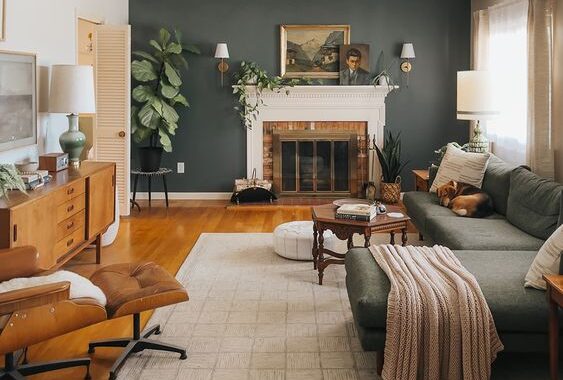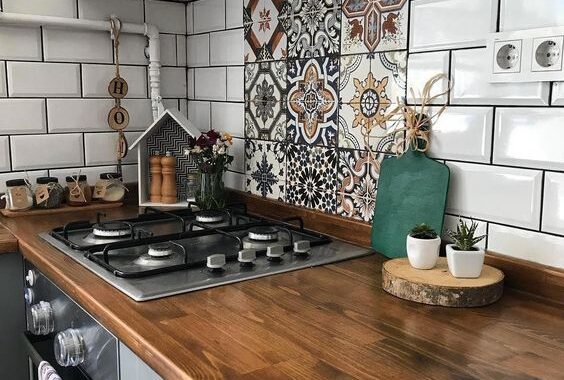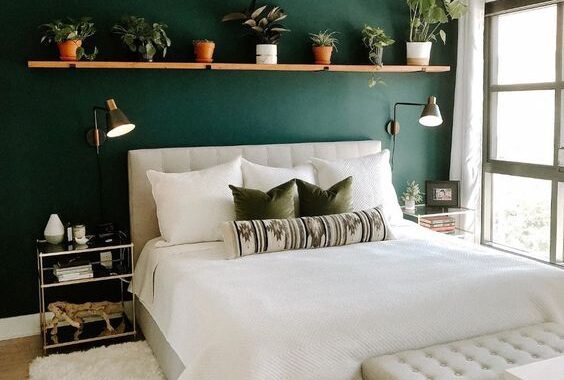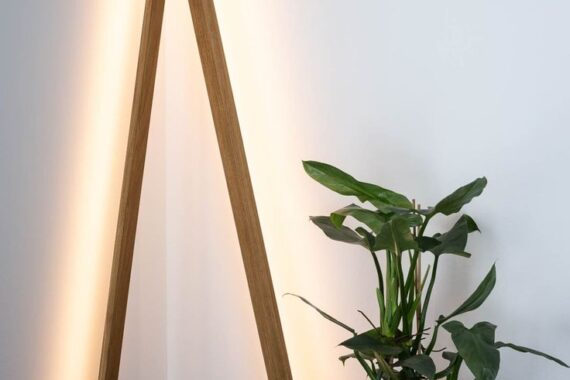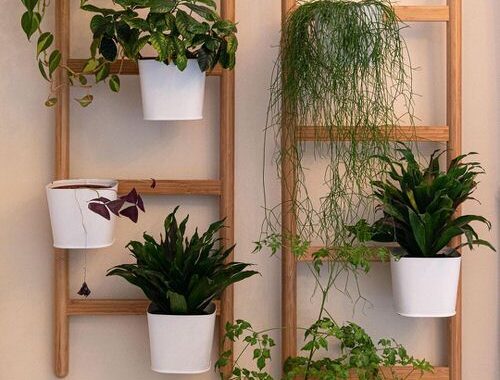Selecting the perfect wood for your dining table top is a significant decision. Your dining table is more than just a piece of furniture; it’s where family gatherings occur, memories are made, and delicious meals are shared. So, when considering the wood for your dining table top, several essential factors come into play to ensure it not only complements your home decor style but also meets your needs.

Your home’s interior design style, durability requirements, budget considerations, and preferences for maintenance and finish all play a vital role in determining which wood is the best fit for your dining table. To make this process easier, we’ll delve into the essential factors that should guide your selection.
This comprehensive comparison of different wood types will provide you with the insights needed to match your specific requirements and personal style, ensuring your dining table is the perfect fit for your space.
Let’s take a closer look at these influential factors!
Wood Factors Overview
| Wood Type | Appearance / Color | Home Decor Styles | Durability | Cost | Maintenance | Types of Finish |
|---|---|---|---|---|---|---|
| Oak | Varied, Light to Dark | Versatile | Very Durable | Moderate | Regular Cleaning | Stained, Clear |
| Walnut | Rich Dark Brown | Contemporary, Modern, Various | Strong | High | Regular Cleaning | Oiled, Varnished |
| Cherry | Reddish-Brown | Traditional, Formal, Various | Moderate to High | High | Regular Cleaning | Stained, Clear |
| Maple | Light, Smooth Grain | Modern, Transitional, Various | Moderate to High | Moderate | Regular Cleaning | Clear, Stained |
| Ash | Light, Straight Grain | Modern, Mid-Century, Various | Very Durable | Moderate | Regular Cleaning | Oiled, Clear |
| Mahogany | Reddish-Brown | Elegant, Formal, Various | Very Durable | High | Regular Cleaning | Stained, Clear |
| Hickory | Contrasting Streaks | Rustic, Farmhouse, Various | Extremely Durable | Moderate | Regular Cleaning | Clear, Stained |
| Elm | Strong, Unique Grain | Eclectic, Rustic, Various | Very Durable | Moderate | Regular Cleaning | Clear, Stained |
| Reclaimed Wood | Weathered, Rustic | Rustic, Industrial, Various | Varies | Varies | Regular Cleaning | Varies |
| Teak | Golden-Brown | Outdoor, Tropical | Very Durable | High | Minimal Maintenance | Teak Oil, Varnished |
| Cypress | Light, Interesting | Outdoor, Rustic, Various | Very Durable | Moderate | Minimal Maintenance | Clear, Stained |
| Pine | Light, Soft Grain | Cottage, Casual, Various | Moderate | Low | Regular Cleaning | Clear, Stained |
| Birch | Light, Even Grain | Modern, Budget, Various | Moderate | Low | Regular Cleaning | Clear, Stained |
| Reclaimed Barnwood | Distressed, Unique | Rustic, Industrial, Various | Varies | Varies | Regular Cleaning | Varies |
Key Factors for Choosing Your Dining Table Top Wood
1. Your Home Decor Style
Your home’s decor style and personal preference play a key role in choosing the wood for your dining table top. Different styles, like modern, rustic, and traditional, require specific wood types to match their look and feel. Let’s explore how these styles align with various woods to help you decide.
Modern
Suitable Woods: Walnut, Oak, Maple
Modern decor often features clean lines, simple designs, and a minimalistic approach. Walnut complements this style with its sleek appearance. Oak and maple offer a lighter look and can be used for a more contemporary take on modern decor. These wood types provide versatility in finishing and color, allowing you to match them to modern decor’s often neutral and monochromatic color palettes.
Rustic
Suitable Woods: Reclaimed Oak, Reclaimed Pine, Hickory
Rustic decor embraces natural and weathered aesthetics. Reclaimed oak and pine, with their character marks and aged appearance, add warmth. Hickory’s strong grain pattern and contrast give a rugged, outdoorsy feel. These woods bring authenticity and history to rustic decor, creating a cozy and welcoming ambiance.
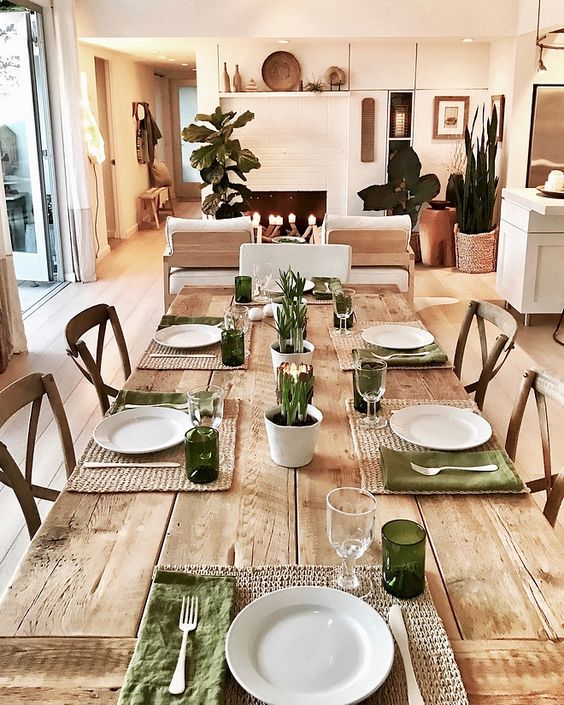
Traditional
Suitable Woods: Cherry, Mahogany, Oak
Traditional decor is known for its classic, timeless appeal. Cherry’s fine grain and reddish-brown color, mahogany’s elegance, and oak’s rich appearance align well with this style. These woods exude sophistication and charm, making them ideal for traditional settings.
Contemporary
Suitable Woods: Maple, Ash, Walnut
Contemporary decor embodies the latest design trends, focusing on clean lines and simplicity. Maple’s smooth, light color, ash’s uniform grain, and walnut’s dark tones all enhance the clean and uncluttered look. These woods are versatile and can be adapted to suit the ever-evolving contemporary style.
Industrial
Suitable Woods: Reclaimed Wood, Hickory
Industrial decor often incorporates raw and unfinished elements. Reclaimed wood’s weathered appearance and hickory’s strength with visible grain patterns contribute to the rugged, factory-inspired look. These wood types add character and history to industrial settings, reflecting the style’s utilitarian roots.
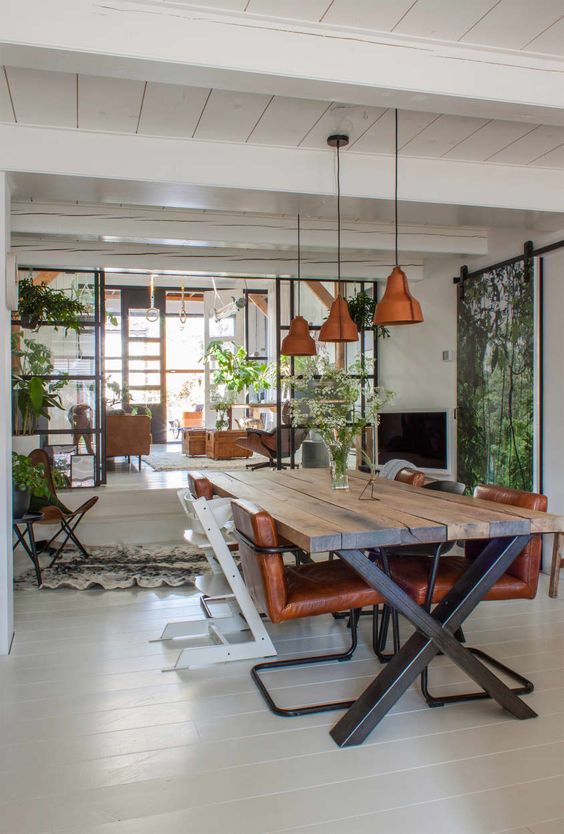
Minimalist
Suitable Woods: Birch, Maple, Ash
Minimalist decor is characterized by simplicity and functionality. Birch’s light color, maple’s smooth grain, and ash’s clean look are in line with the minimalist approach. These woods offer a subdued backdrop, allowing minimalistic designs to shine without distractions.
Mid-Century Modern
Suitable Woods: Teak, Walnut, Oak
Mid-century modern decor seeks to capture the style of the mid-20th century with its clean lines and organic forms. Teak’s warm color, walnut’s sleek look, and oak’s timeless appeal match this design. These woods evoke the iconic mid-century modern design, providing authenticity to your space.
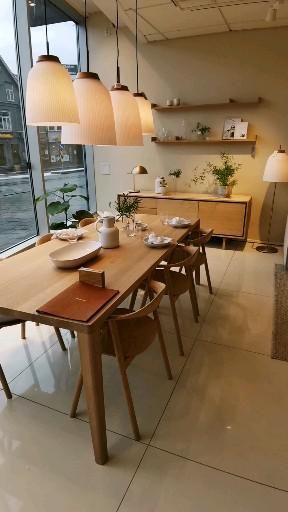
Coastal
Suitable Woods: White Oak, Ash, Maple
Coastal decor is inspired by beachy and seaside themes. White oak’s light appearance, ash’s pale tones, and maple’s fresh look complement coastal interiors. These woods bring a sense of the sea and beachside tranquility to your living space, creating a coastal escape.
2. Durability
Choosing the right wood for your dining table top should consider these factors, aligning your choice with your lifestyle and maintenance preferences. It’s important to keep in mind that each wood type has its unique characteristics and may require different levels of care to preserve its beauty over time.
Hardwood vs. Softwood:
Hardwood and softwood are two primary categories of wood, each with its unique characteristics and uses.
Hardwood:
Hardwood is derived from deciduous trees, which shed their leaves annually. It includes varieties like oak, walnut, cherry, and maple. Hardwoods are known for their durability and strength. They are often preferred for furniture, including dining table tops, due to their capacity to withstand wear and tear. The slow growth of hardwood trees contributes to their dense and sturdy nature.
Softwood:
Softwood, on the other hand, comes from evergreen trees such as pine, cedar, and spruce. Despite the name, some softwoods are quite hard. However, they tend to be less dense and durable than hardwoods. While softwood can still be used for dining tables, it may require more maintenance and is more susceptible to dents and scratches.
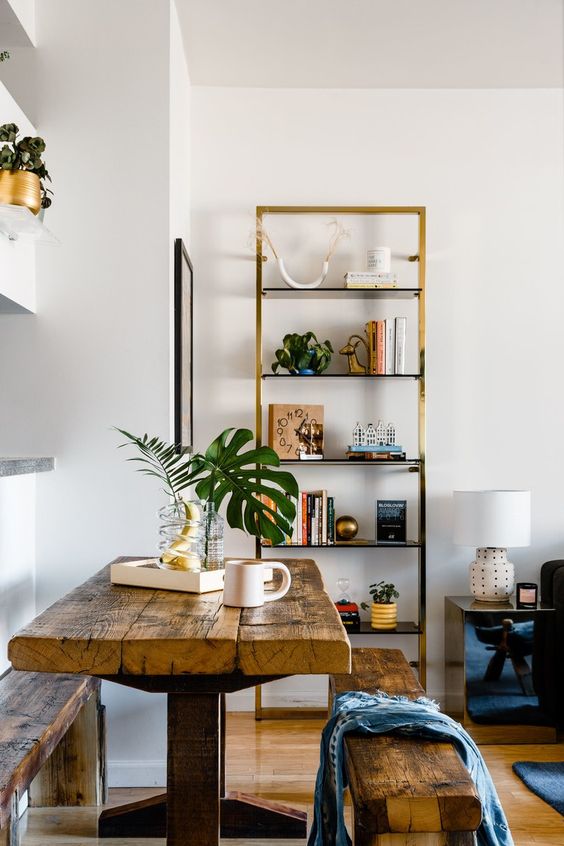
Resistance to Scratches and Dents:
The resistance of a dining table’s wood to scratches and dents is a crucial factor in its durability.
Hardwood:
Hardwood, known for its toughness, is generally more resistant to scratches and dents. The dense structure of hardwood makes it less prone to surface damage, making it an excellent choice for dining tables that will endure frequent use, especially in households with children or high-traffic areas.
Softwood:
Softwood is typically more susceptible to scratches and dents due to its lower density. While it can still be used for dining tables, it may require more caution and protective measures to prevent damage over time.
Resistance to Moisture and Heat:
A dining table should be able to withstand occasional spills and exposure to heat from hot dishes or cookware.
Hardwood:
Hardwood offers good resistance to moisture and heat. It can handle minor spills without immediate damage and is less likely to warp or crack from heat exposure. This makes it suitable for dining areas where accidental spills and hot serving dishes are common.
Softwood:
Softwood is less tolerant of moisture and heat. It may be more vulnerable to warping or staining from spills, and hot objects can leave marks or even cause burns on the surface. Proper care is essential to maintain the appearance of softwood dining tables in the presence of these factors.
3. Cost
The cost of your dining table’s wood depends on your budget and the level of sophistication you desire in your dining area. Budget-friendly options provide accessible and attractive choices, while high-end woods offer the ultimate in luxury and style. Ultimately, your decision should align with your financial considerations and your vision for your dining space.
Budget-Friendly Options:
When selecting the wood for your dining table top, the cost can be a significant factor influencing your decision. If you’re working within a budget or looking for an affordable yet attractive option, several wood types offer an excellent balance of cost-effectiveness and visual appeal.
Pine:
Pine is a popular choice for budget-conscious individuals. It’s readily available and relatively inexpensive. While pine is a softwood and may be more prone to dents and scratches, it provides an opportunity to enjoy the natural beauty of wood without breaking the bank. With proper care and maintenance, a pine dining table can serve you well.
Maple:
Maple wood is another cost-effective option. It is known for its strength and durability, making it resistant to dents and damage. Its smooth, light color complements various decor styles, and it offers a budget-friendly choice for those seeking a dependable dining table without a high price tag.
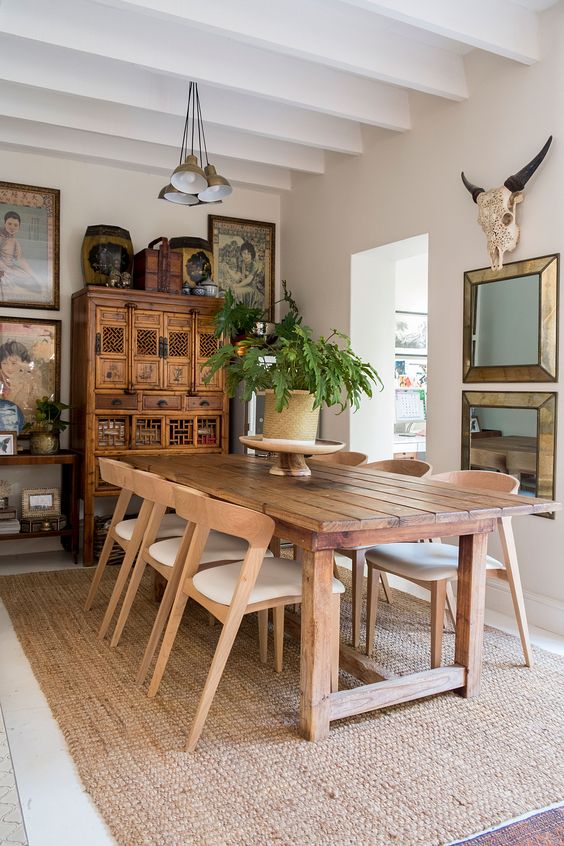
High-End Choices:
If your budget allows for more luxurious options, you can explore high-end wood choices that exude elegance and sophistication. These woods come with a higher price point but offer exceptional quality and aesthetics.
Walnut:
Walnut is a sought-after hardwood that adds a touch of class to any dining space. Its rich, dark hues and striking grain patterns make it a favorite among fine furniture lovers. While it falls into the high-end category, the investment in a walnut dining table rewards you with a stunning centerpiece that can last for generations.
Cherry:
Cherry wood is another high-end choice, often used for traditional and formal dining room furniture. Its fine grain, rich reddish-brown color, and natural elegance make it ideal for creating a refined atmosphere. While it may come at a premium price, a cherry wood dining table is a testament to timeless beauty.
4. Maintenance
When considering the cleaning and long-term care of your dining table top, make sure your choice aligns with your lifestyle and your willingness to invest effort in its maintenance.
Ease of Cleaning:
These wood types are easy to clean with simple care.
Ash:
Ash is straightforward to clean. Regular dusting and an occasional wipe with a damp cloth are generally sufficient to keep it looking great.
Maple:
Maple is easy to clean. A simple dusting or a mild soapy water solution for tougher stains is often enough to maintain its appearance.
Long-Term Care:
These wood types require regular cleaning and some maintenance to ensure long-term durability.
Oak:
Oak is a durable wood, but it may need periodic applications of wax or wood oil to preserve its appearance over the years.
Cherry:
Cherry, while elegant, is somewhat softer, and it’s more prone to dents. Regular cleaning, protection from direct sunlight, and reapplication of wood oil or varnish are recommended for long-term care.
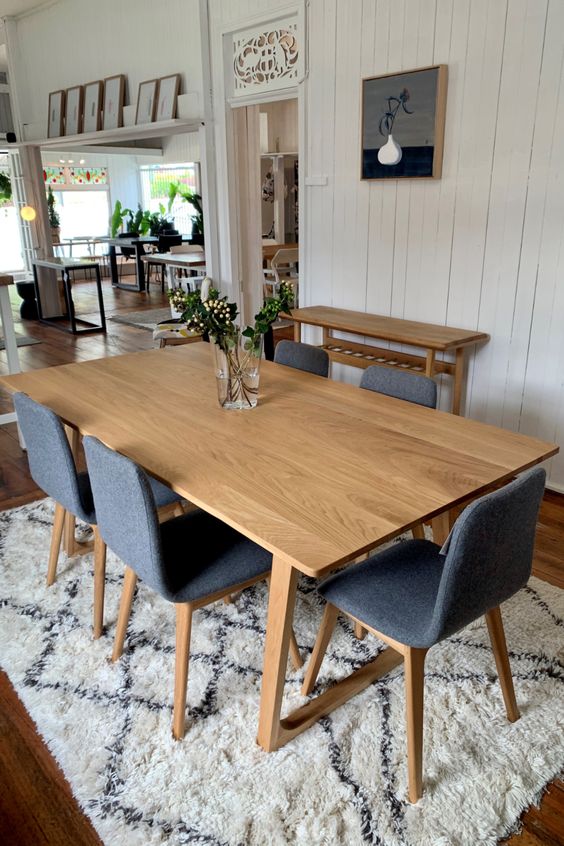
Regular Cleaning & Long-Term Care:
These wood types require more attention in both cleaning and long-term care.
Walnut:
While walnut showcases rich tones and grain patterns, it might need more attention to keep it looking its best. Regular dusting and protection from extreme conditions can help maintain its charm.
Hickory:
Hickory’s rustic appeal is charming but may require more maintenance. Regular cleaning and additional care, such as managing humidity levels, are essential for its long-term well-being.
5. Placement
Indoor Dining Tables:
Indoor dining tables are designed for use in controlled environments, where they aren’t exposed to harsh weather conditions. Here are some wood types suitable for indoor dining tables:
Oak:
Oak is a versatile choice, fitting well in various indoor settings, from traditional to modern. Regular dusting and occasional cleaning with a wood-specific cleaner will keep it looking its best.
Walnut:
Walnut’s elegant appearance makes it a great choice for indoor dining tables, adding a touch of sophistication to your decor. Regular dusting and a periodic application of wood oil will maintain its beauty.
Ash:
Ash is a light-colored hardwood that complements many interior styles, from minimalist to mid-century modern. Simple dusting and, if desired, an occasional treatment with wood wax or oil can help preserve its charm.
Outdoor Dining Tables:
Outdoor dining tables need to withstand changing weather conditions and potential exposure to moisture, so durability is key. Here are some wood types suitable for outdoor dining tables:
Teak:
Teak is a top choice for outdoor dining tables due to its natural resistance to moisture and decay. Occasional cleaning with mild soap and water, along with sanding or applying teak oil, helps maintain its appearance.
Cedar:
Cedar is naturally resistant to insects and decay, making it suitable for outdoor use. Routine cleaning and sealing or staining the wood will prolong its lifespan.
Redwood:
Redwood offers excellent weather resistance and durability, making it a great option for outdoor dining tables. Occasional cleaning and sealing will keep it looking fresh and protected from the elements.
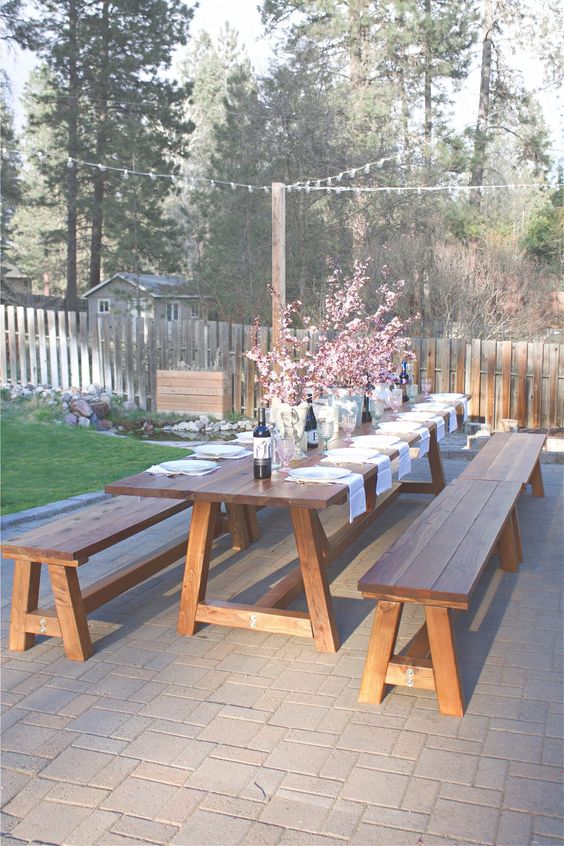
In conclusion, choosing the best wood for your dining table top is a significant decision that depends on several key factors. Your home decor style, the level of durability you require, your budget, and the amount of maintenance you’re willing to invest all play a crucial role in determining the ideal wood type for your needs. Whether you opt for the timeless beauty of oak, the sophistication of walnut, the versatility of ash, or any other wood type, your choice should align with your personal preferences and practical considerations. By considering these factors and understanding the unique characteristics of each wood type, you can confidently select the perfect dining table that complements your home, lifestyle, and aesthetic preferences.
Wooden Table Top Idea #1

pinterest.com

